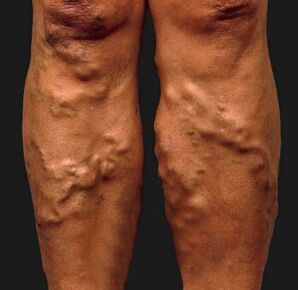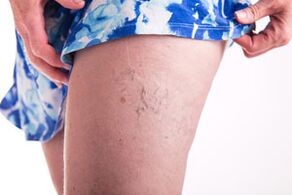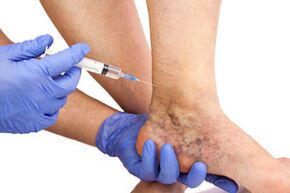
If venous blood is violated, the pressure inside the veins increases, and they begin to swell and become visible under the skin.Varicose veins affect veins in the lower limbs more, but can occur in any organ in the body.
General Features
Variants on the legs affect men and women of any age, but are often found in patients in middle-aged and older people.Varicocele is a very common disease.Up to 15% of older men and almost all older women suffer from this disease.
Risk factors for pathological development:
- The close relatives have diseases;
- A sedentary lifestyle;
- overweight;
- Stay in a standing position for a long time;
- Pregnant.
Causes of varicose veins
The causes of varicose veins have not been fully studied.In some cases, poor blood flowing through the vein is caused by the loss or weakness of blood vessels located deep in the fabric.Similarly, varicose veins in the lower limbs and other organs may be caused by weaknesses in the blood vessel wall itself.
Less common is that varicose veins on the legs are associated with the following conditions:
- metastatic venous inflammation (phlebitis);
- The formation of blood clots in the venous line;
- Congenital abnormalities are in the development of blood vessels.
The disease is characterized by progressive therapy and cannot be completely cured.However, there are quite effective prevention of varicose veins - using compression stockings, maintaining normal weight and regular physical exercise, mainly walking or swimming.Dynamic load on the legs helps the muscles push blood towards the veins instead of causing it to leak in the opposite direction.
Classification of varicose veins

This form of varicose veins is distinguished according to the location of the pathologically altered blood vessels:
- Varicocele in the small pelvis of women;
- Lower limb venous lesions;
- swelling of esophageal veins during liver pathology;
- Termination of plastids for different organs.
Varicose veins have this stage:
- Compensation: No complaints, venous swelling in the legs is visible.
- Subcompensation: The patient complains about swelling, outbreak, leg severity, and convulsions at night;
- Compensatory: skin changes development - pigmentation, signs of chronic inflammation, nutritional ulcers.
The clinic often uses CEAP classification to fully describe clinical signs, causes, localization of the lesions and the type of blood flow disorder.
Symptoms of varicose veins
In the initial stage of the patient, there is only aesthetic discomfort.In the future they join:
- Pain, convulsions, itchy skin;
- Swelling, especially at night, the severity and fatigue of the legs;
- A rupture feeling.
Less frequency, but more severe symptoms include:
- Subcutaneous bleeding from rupture of venous rupture;
- thrombocytosis;
- Nutritional ulcers;
- “Wet” dermatitis;
- Stimulating changes in rough skin.
These complications are treated much worse than pathology than early pathology.
To explore the veins on the legs and get treatment for varicose veins, you need to contact a vascular surgeon or abortion doctor.Diagnosis must include ultrasound multi-position of the vein to evaluate blood, blood vessel walls, valve equipment.
Treatment of varicose veins

How to treat varicose veins depends on the size and location of the vein changes, the symptoms and the presence of skin changes.Various methods are used to treat varicose veins:
- The legs are raised in a lying or sitting position;
- Use specially selected compressed knitted garments;
- sclerotherapy (introducing a special drug into the lumen, forming a blood clot, followed by vein destruction);
- Use laser, radiofrequency and other techniques to ablate pathologically altered veins;
- Surgery treatment of varicose veins in the legs - venectomy.
In the early stages of the disease, doctors will prescribe medications for varicose veins for oral or external purposes:
- Tablets for varicose veins;
- Ointments with anti-inflammatory, toxins, anticoagulants and other useful varicose veins.
In addition, many patients use folk therapy to treat varicose veins on their legs:
- Alcohol tin agent of horse chestnut or carancho leaves, used for friction and compression;
- Compress from tomatoes, cabbage, carange;
- Herb infusions - Nettle, Yarrow, Momomile and St. John's Wort, Raspberry Tablets and Aleteen Root.
Prevent disease
To prevent or slow down the development of varicose veins, doctors recommend that you follow such preventive rules:
- Raise your legs onto the pillow regularly;
- Reject a long-term status;
- Use preventive compression knitted clothing, which can be selected in a pharmacy or medical store;
- Regular physical exercise (walking);
- Weight control;
- If necessary, stand for a long time - perform simple exercises (roll from toes to heels, climb up the socks, and step for feet).
Such measures will contribute to loading on the venous channels, improvement of the venous valve and preservation of the blood vessel wall.


















